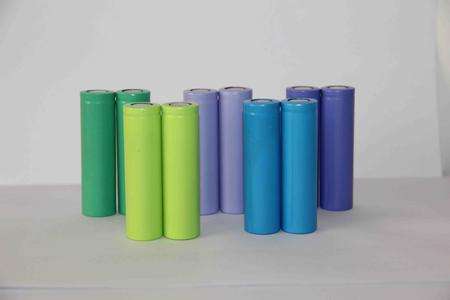Non-Toxic Batteries – Materials and Usage
APR 13, 2022 Pageview:1449
Batteries have evolved greatly. Years of research and usage have allowed for better designs, and safer batteries are practical power sources. However, there are still issues of safety, especially when it comes to handling.
Many instances of batteries exploding have been reported. Even without explosions, some of the batteries have very toxic materials. They pose serious threats to the environment if disposed of carelessly.
Nevertheless, technological advancement has created better products. Some batteries are seen as safer than others regarding their use and environmental impact.
Understanding this can help you make more informed decisions regarding buying and using batteries. It’s an important step towards optimal battery safety.
Today, we will focus on non-toxic batteries. What does it mean, and what are those batteries with non-toxic materials?
Are There Non-toxic Batteries?
This is one of the widest topics of discussion. Some say there are non-toxic batteries, while others say there are none. But one thing is clear; we are all concerned about our battery use and disposal safety.
Before we answer this question, we must first consider the toxic nature of batteries.
Why are Batteries Considered Toxic?
When batteries are well-sealed, they generally pose no threat. Users can touch and handle them safely if the battery’s physical and chemical structure is not compromised. But, it can be hazardous when exposed to the body or the environment. This is because the chemicals found in them can react to cause severe damage.
Lithium-ion batteries are considered the best batteries today. They are more powerful and promise better performance than any other chemistry,
These batteries are relatively safe when they stand alone. They feature two heavy metals, nickel, and cobalt, which form part of the cathode. Used in small amounts, these metals are harmless.
But then, there are so many batteries in production and in use every day. This also means a lot of them are being thrown away. This causes an accumulation of metals, which become toxic and dangerous. People and the environment suffer from such metals.
As if that’s not enough, the metals are fire hazards. They have caused serious damage in the past, especially when transported in passenger planes.
Toxicity and danger of explosion are why you cannot throw European Li-ion batteries into landfills. One can face serious legal consequences if caught throwing the batteries without any consideration.
Recycling plants with no adequate facilities have caught fire because of such batteries in the past. Cells become damaged when the battery is under the weight of other wastes, causing a thermal runaway activity that leads to fires.
Lead-acid Batteries
Lead-acid batteries are a common type of larger battery. They have been used to start and run cars’ electrical systems since the 1910s.
The process of lead-acid batteries is quite mature today. They are safe to handle due to their sealed nature. However, leakages cab be dangerous to people and the environment. If breathed or ingested, they can develop issues, especially in babies and small children.
Cadmium causes even more damage. It’s more toxic than lead when it enters the human body. This metal causes respiratory and kidney damage when one is exposed to them for a long time.

What about recycling?
90% of lead-acid batteries are recycled, while only 50% of li-ion batteries are. Hence, a lot of reusable materials end up going to waste.
Materials like cobalt and lithium are in high demand. However, the process of recycling lithium batteries is quite demanding, which is why there are not very many recycling plants. The cost of recycling is often greater than the cost of receiving them.
As if that is not enough, lithium, nickel, and cobalt in the batteries may also contain manganese, graphite, copper, and aluminum. The process of separating these materials is relatively high.
Luckily, many companies are working on better and cheaper ways of achieving these recycling needs. Even so, recycling does not address the issue of toxicity in the materials that make batteries. And that is why we still need to dig deeper into non-toxic alternatives.
Non-toxic batteries?
Technology brings out stronger possibilities today, more than we imagined years ago. There are now safer batteries, non-toxic and with greater power.
Researchers from Imperial College in London came up with a battery prototype that features thin films of plastic and saltwater. It can charge and discharge within seconds. The battery uses a low-cost, non-toxic, non-flammable water-based solution as an electrolyte. This means it is safer and easier to recycle.
Even though it still has low energy density, it can work effectively in applications requiring high power density but not necessarily high density. It can, for example, be used in renewable energy grid storage.
Other researchers are aiming to create nickel and cobalt-free batteries. The technology would use high flash-point electrolytes, which is safer.

Which battery is Made from Non-Toxic Materials
One of the newest battery technologies is the LifePO4 battery. They are found in electric scooters, bicycles, and wheelchairs in many parts of the world. This material is more advanced in the lithium-based battery realm.
According to the manufacturer, the batter is made from non-toxic materials abundant in our earth's crust. It’s a battery that could finally make the electric car very profitable.
Many argue that this is the safest battery on the market today. As expected, it’s more costly than other batteries. Also, it’s said to offer better energy capacity.
What Are The Safest Batteries To Use?
Most batteries are safe to use as long as you follow the right procedure. But the problem arises when the user ignores all the safety warnings and exposes the battery to extreme conditions.
Therefore, before worrying about the safest battery, you must first learn how to use them. For instance, do not use cracked or swollen batteries, do not expose the battery under extreme heat, and do not dispose of the battery with other home items.
With that in mind, LifePO4 is still the safest battery out there. Concerning car batteries, sealed batteries are a better choice.
- Prev Article: Oldest Battery History, Company, and Working
- Next Article: Old Battery Disposal, Recycling, and Environmental Impact
Leave Message
Hottest Categories
-
Hottest Industry News
-
Latest Industry News










